From Ewe to Ewe by Katherine McRose
Today’s guest post has been written by Katherine McRose of Right Choice Shearing.
Projects made by fiber arts are one of the purest forms of crafting. Each movement of the needle, delicate weave, or race of the shuttle is done out of passion, but that’s far from where the love starts. It doesn’t begin at the feeding of the spinning wheel or the carder. The first admiring touch doesn’t occur right before the wash or around the skirting table. No, the first time loving hands touch your fiber is while it’s still on its original owner. After the care of the fiber animal, it starts with the shearing, in the moment between a shearer and their patron when a true connection is formed. In this moment of celebration between the animal and its handler, gratefulness is shared. The animal feels the relief from the fiber coming off and relaxes into the swaying motions of the shearer’s dance. At the same time, the shearer settles into their movements, proud of the mutualistic moment of peace. Without the sheep, the shearer wouldn’t survive, and without shearers, these sheep wouldn’t either.
Getting started and finding our niche
That connection is the reason I’ve continued to shear for the past 12 years. I have experienced no stronger feeling than connecting with an animal, earning their trust, and being a part of maintaining their quality of life. I have been shearing sheep since I was 14 years old. I began by answering a Craigslist ad for sheep shearing. I had never shorn an animal before, but I had watched someone else shear a meat goat. That wasn’t too bad, so this wouldn’t be either, right? Wrong. It took me and a friend 4 hours to shear just 7 sheep. In case you were wondering, they looked horrible, like chewed up foam pillows. However, this lady was so thrilled someone was willing to do it that she told all of her friends about us. That was the start to my business, Right Choice Shearing, which now serves 9 Midwest states, over 5,000 sheep, 1,500 alpacas and llamas, and right at 100 goats, with just myself and my wife, Darian.
We specialize in shearing small hobby farms. Since the decline of the wool industry due to the creation of synthetic fibers, shearers are becoming few and far between. The good ones are retiring with broken down bodies from years of abuse, and the young ones don’t have anyone to learn from. There are still large, thriving, wool operations in the U.S., and the shearers working those circuits are booked 10 months straight, shearing tens of thousands of sheep a year. That leaves no time for the little guys. How can a person say no to 200 sheep in a day for a group of 25 on the side? That’s where we come in. I have a few groups of 100–200 sheep and a farm of 150 llamas which take a whole day themselves, but our days are mostly composed of traveling to 5–8 farms, the most being 14 farms. We are the people who come out for those 2 guard llamas no one can get close to. We show up for the backyard alpacas and the flock of 18 fiber sheep.
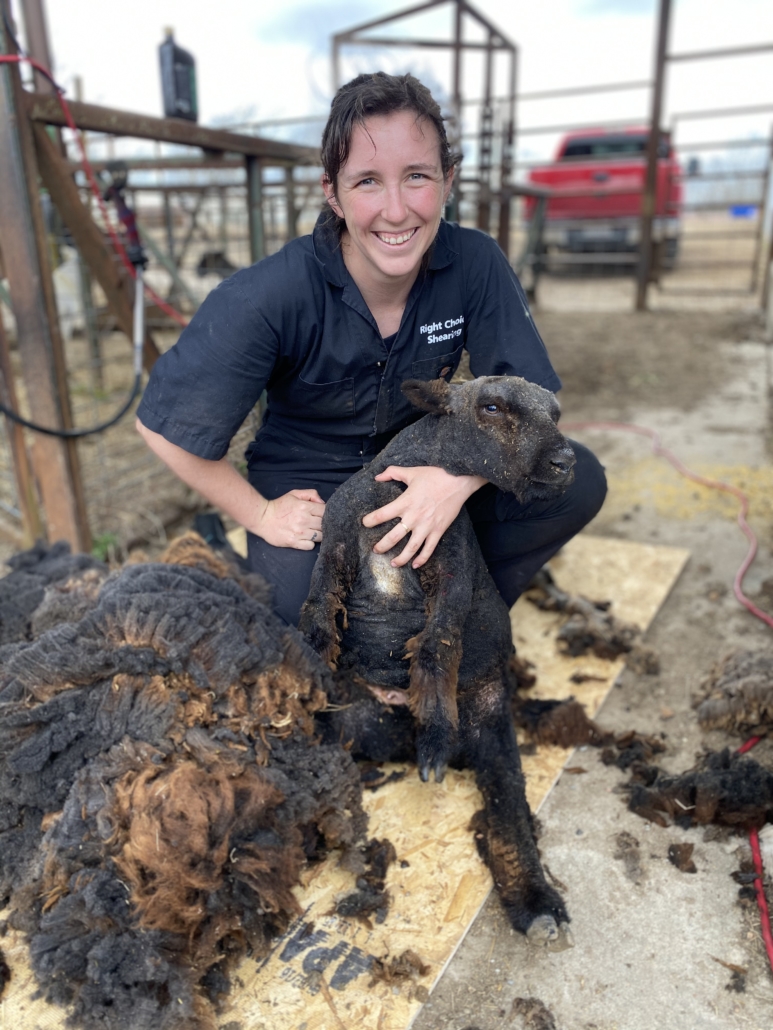
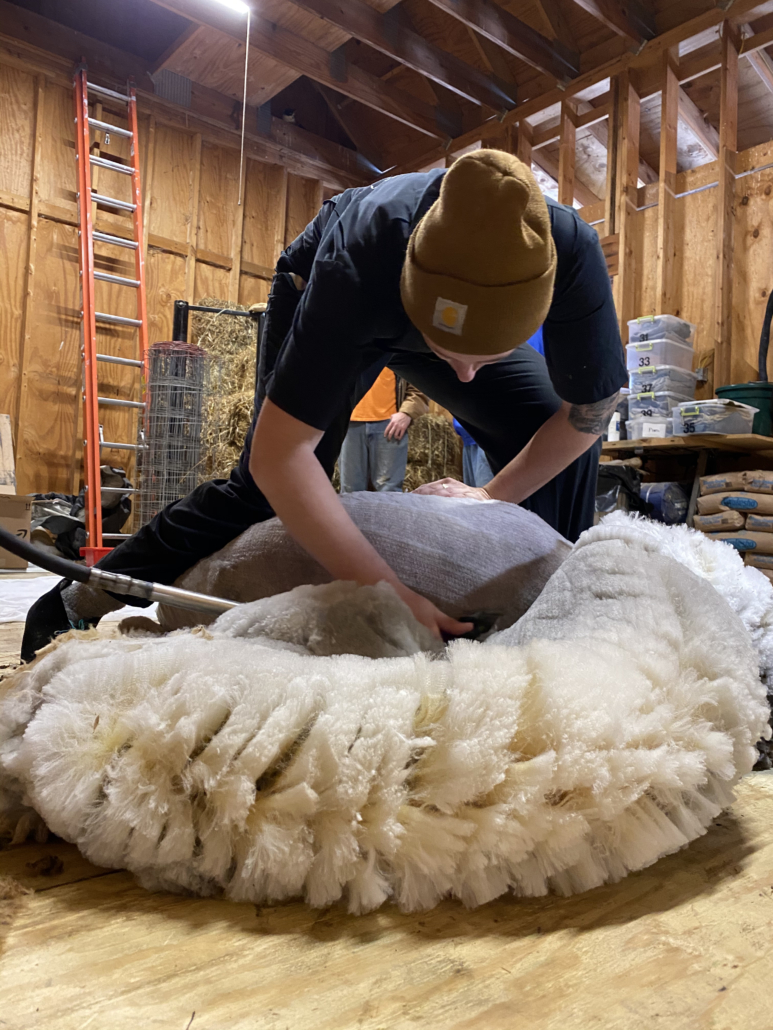
Shearing as a hobby shearer
Although we hobby shearers share the same passion and pride for our craft that crew shearers do, we are left to blindly navigate the waters of the shearing industry. I didn’t know another shearer when I started out. I had no mentors to ask questions or YouTube videos to give instruction, so we just faked it until we made it. It didn’t take long to figure out the standard. Shepherds want clean animals with no nicks, so that’s where we started.
Being small women, we quickly realizing that wrestling these very strong animals wasn’t going to be an option. I have always been persistent and decided there would be no animal I couldn’t catch and shear, so I had to learn to work with these beautiful, intelligent creatures. I studied their body language and instinct to better read and control the vibe of the encounter. Llamas, for example, are traditionally cat like in their interactions with humans. Most are not a fan of physical affection and certainty do not want to be restrained. Setting the vibe starts when we step in the pen.
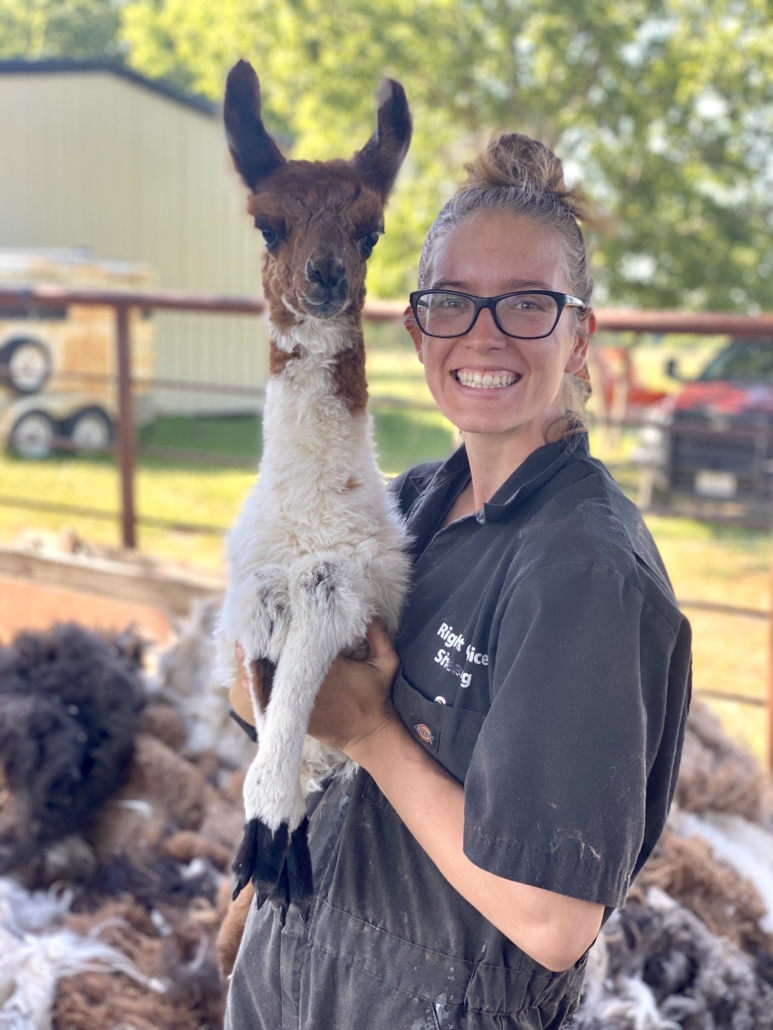
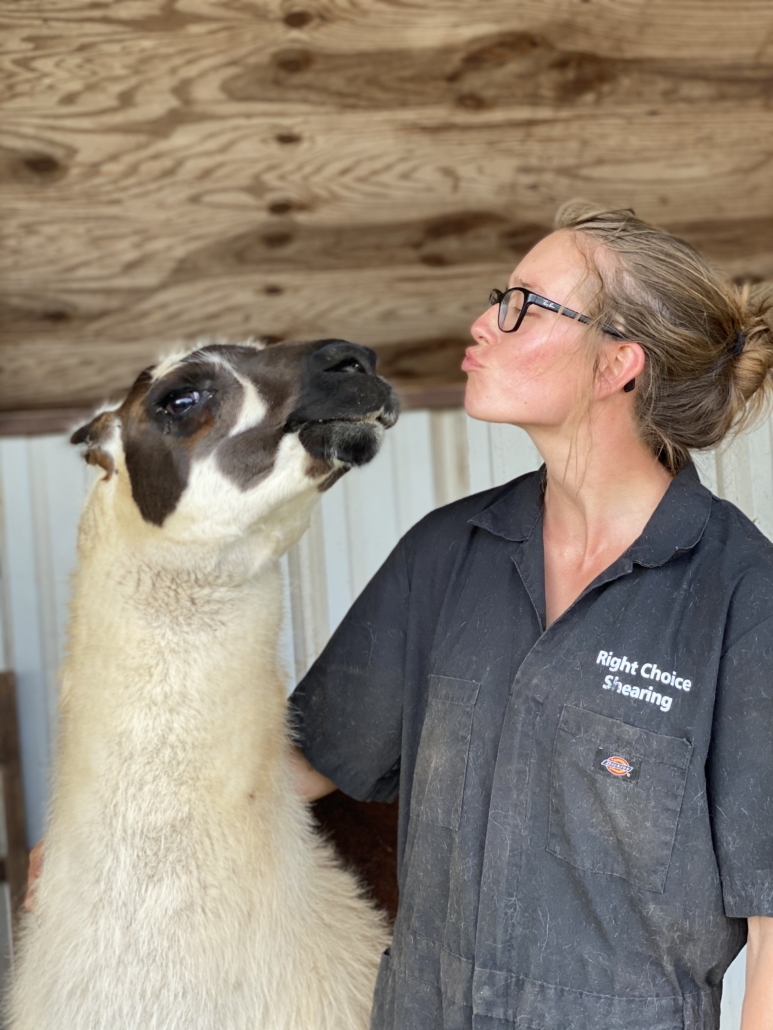
Shearing with confidence
Confidence is a must. The llama needs to know we feel comfortable with them and are certain in our movement. They can sense if we are unsure and feed off of that, making them nervous. We avert our gaze. The llama is staring us down, taking in our presence. Strong, predator eyes induce instant, natural fear. With eyes down, we move slowly towards the animal, one step at a time, guiding them to a safe corner. Now our hands reach out to first meet their body. The llama is typically nervous but, with proper timing, observes we are calm and our touch doesn’t hurt. At this point, the llama usually stands to be haltered. Slow, kind movements bring the halter over their ears and around their snout. These are incredibly sensitive areas for any animal, so completing this step is most of the battle.
Next, the llama is tethered to a post, and one shearer stands on either side to start the trim. This presence keeps the animal from turning its body side to side, again, keeping the energy low. We remove the barrel, or the main body, of the llama first. The barrel is a great place to earn the trust of the animal before moving the buzzing shears up their neck or down their legs. It is also where the animal loses most of its body heat. This is important to note because the main goal of this shearing is animal maintenance, not beauty. If the animal becomes stressed around their more sensitive areas, we know that they will survive the summer heat with just a barrel cut. Additional stress is not worth a perfect haircut. This also happens to be the highest quality fiber, so if there is a plan for it to be used, it’ll be collected separately.
We work our way up the neck next, cleaning behind the halter and up their cheek. Then each shearer works on the legs on their side. Llamas fight using fang-like teeth to rip and tear at each other’s testicles and legs, so this is the hardest part. Llamas can also kick you if you stand anywhere other than directly in front of their chest. If they don’t like it, they will let you know. This is my favorite part, though. If a llama stands while you shear their legs, you’ve done it. You’ve earned their trust. That’s what my passion is. I want to earn that every day. I look forward to returning and seeing the progress. I’ve seen “feral” llamas that “should be sedated” give me that trust without a shot. In just 3 shearings, working with them no more than 10 minutes a year, I’ve seen llamas go from buck wild to perfect clients. That’s the magic of working with animals, learning to communicate through unspoken language. We only get 3–5 minutes with most of these guys every year, but they remember us.
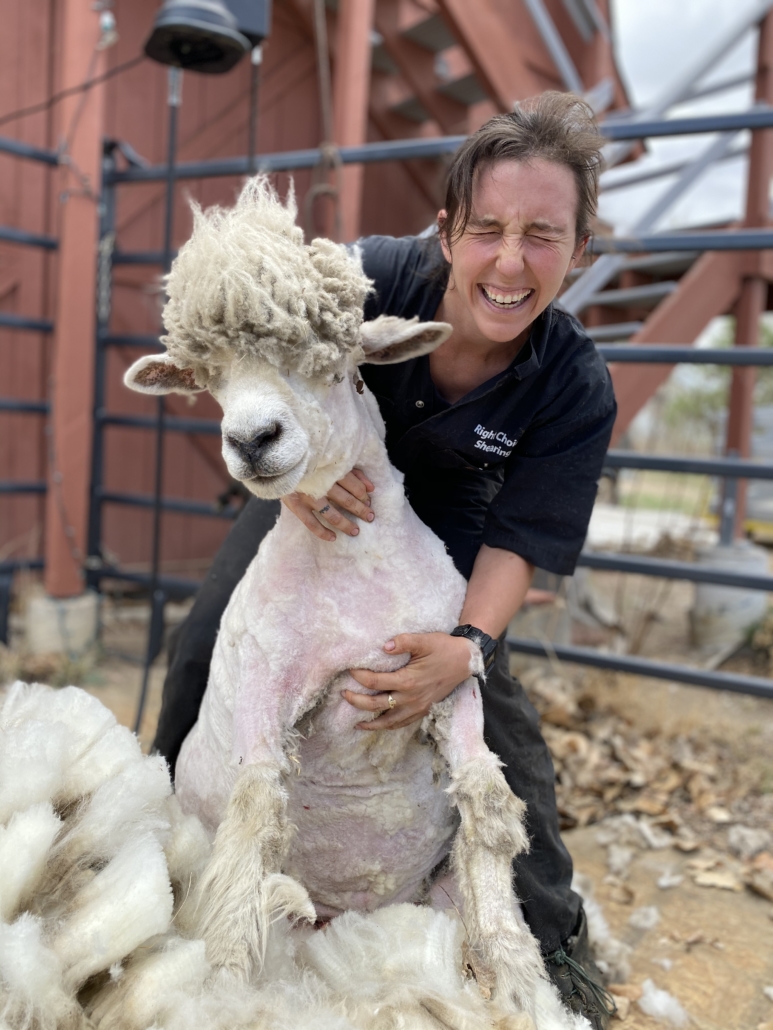
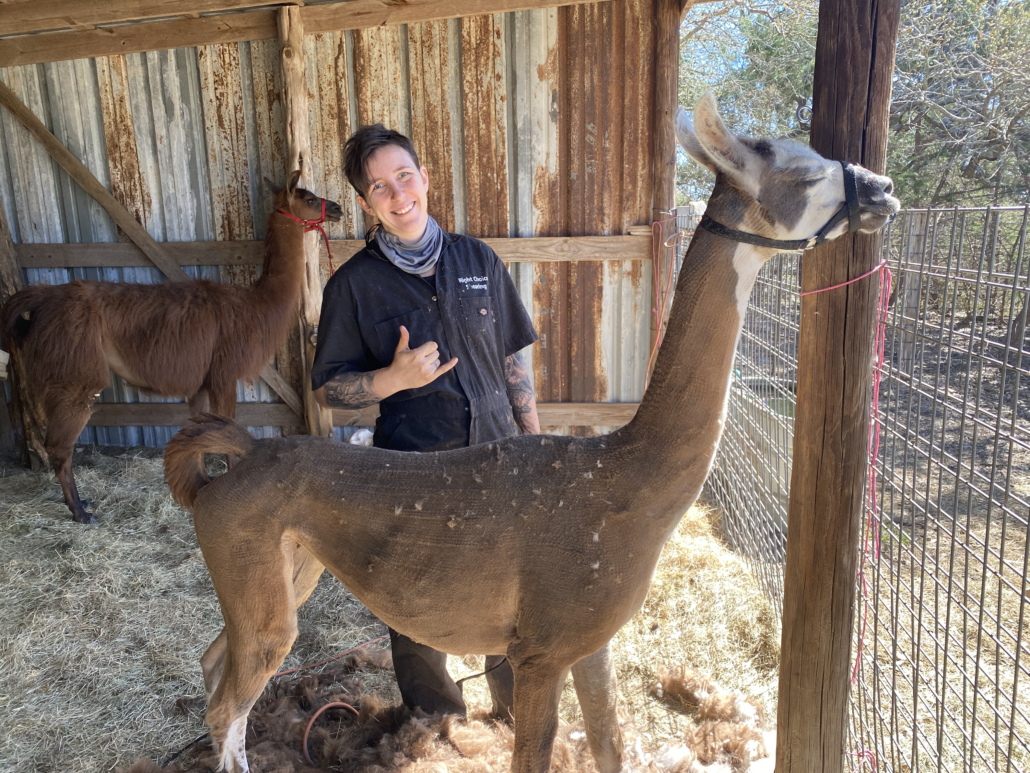
Maintaining the fabric of life
In 2010, I started shearing for people who were forgotten by the industry. I picked up the shears for the first time for endangered breeds and found my life through a dying art. Shearing for hobby farms is more than just grooming a pet. It’s helping to maintain the last few threads of an old fabric of living. There are breeds of sheep that continue to exist solely because of our hobby farms. Commercial operations don’t run large numbers of Jacob sheep or Shetlands. The worldwide fashion market doesn’t want a Finn fleece with varying tones of grey or the creamy moorit found in a CVM blanket. They only want white, no badger or true black. They want consistency, not uniqueness. You can only find that in a handspinners flock. So, thank you, to all of those who support our local farmers. The ones pouring their heart and soul into these animals, providing a product that didn’t get this good with machines and quality control. It got this good from love. The next time you touch a new fleece, or drool over that beautiful yarn, remember, someone else loved it first.
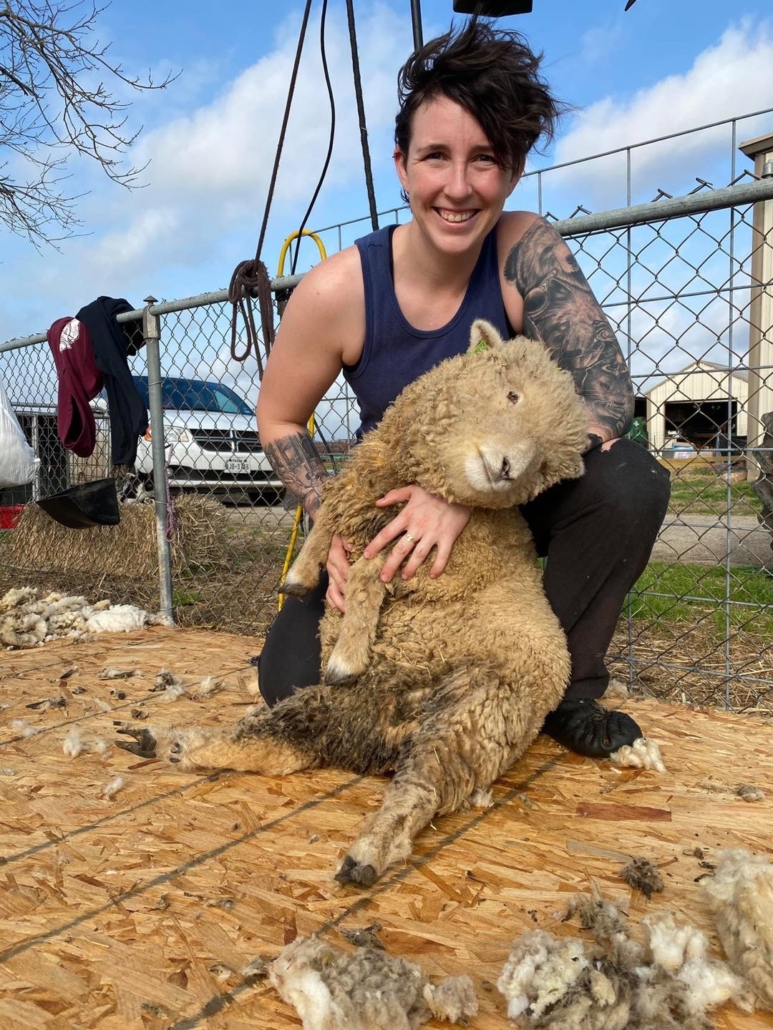
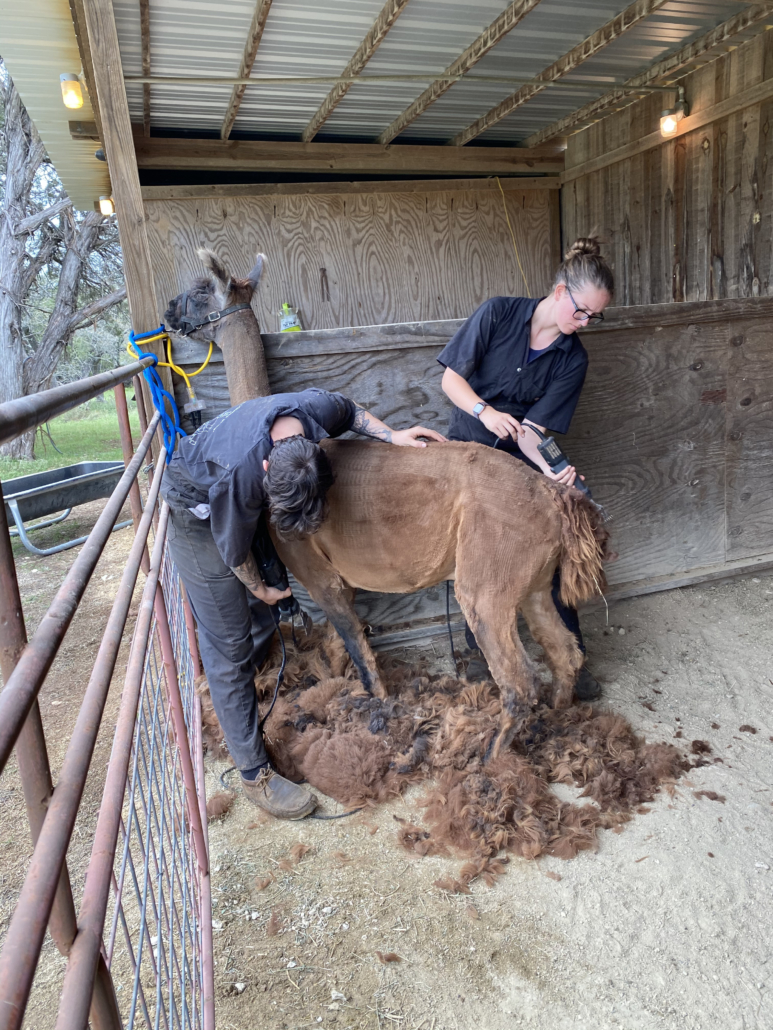
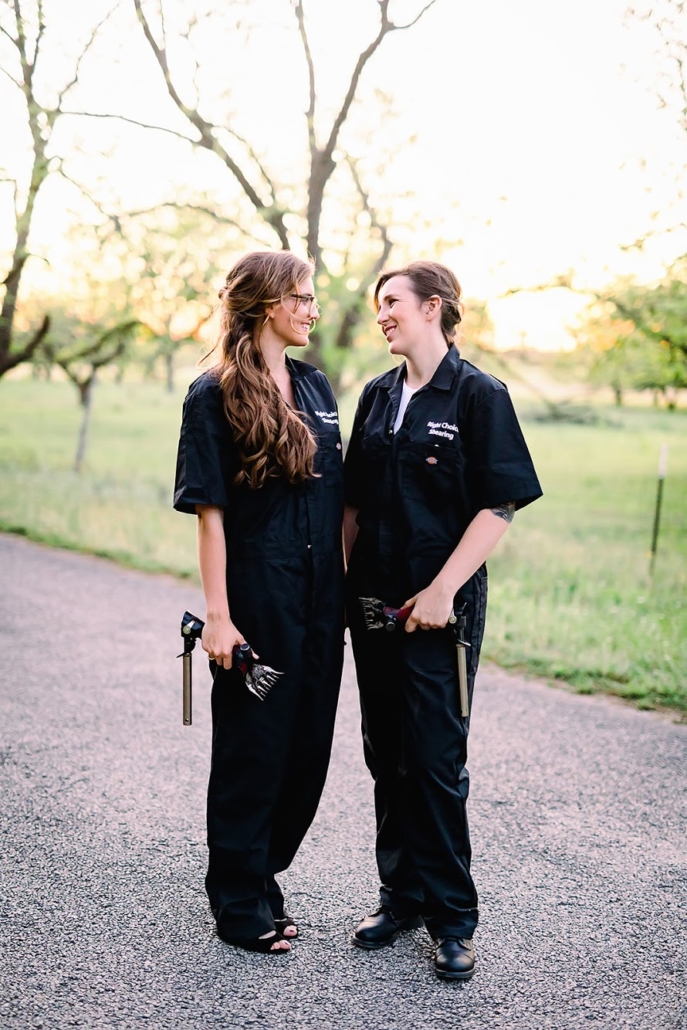
Katherine McRose is a small-town Texas shearer and owner of Right Choice Shearing. What started as a high school side job became her means to pay for her Animal Science degree from Texas A&M and then her career. Her passion is shearing for hobby farmers and spreading industry positivity on their far-reaching social media.
PLY Magazine believes that Black lives matter, as well as LBGTQI+ lives. Those most vulnerable and persecuted in our communities deserve our love and support. Please be good to each other.
Did you know we also have a monthly PLY newsletter? Sign up here!
Did you know we also have a monthly PLY newsletter? Sign up here!


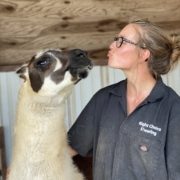
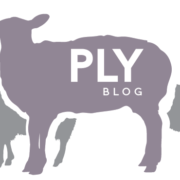

Leave a Reply
Want to join the discussion?Feel free to contribute!